Optic Nerve Pit – February 2019

History
A 45-year-old woman with no significant past medical history presenting with complaint of a shadow in the temporal visual field of the left eye that has been present for one week. Denies flashing, floaters, or curtains. She does not have any eye pain.
POH: No past ocular problems
PMH: No prior medical problems
PSH: No significant past surgical history
FHx: Diabetes (Mother), Hypertension (Father)
Social Hx: No tobacco or alcohol use
Exam:
Corrected visual acuity is 20/20-1 in the right eye and 20/20 in the left eye.
IOP is 14 in the right and 15 in the left eye.
The anterior segment exam is unremarkable in both eyes with no anterior chamber cell or flare noted.
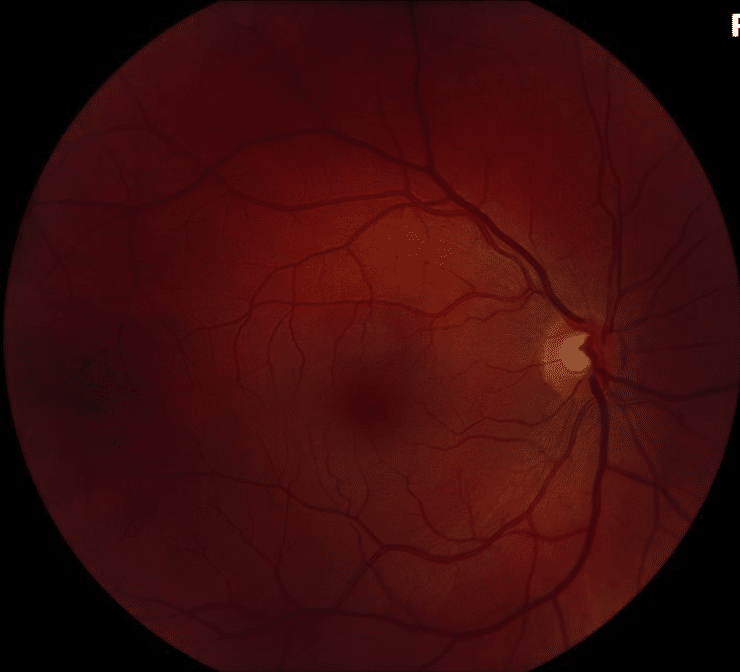
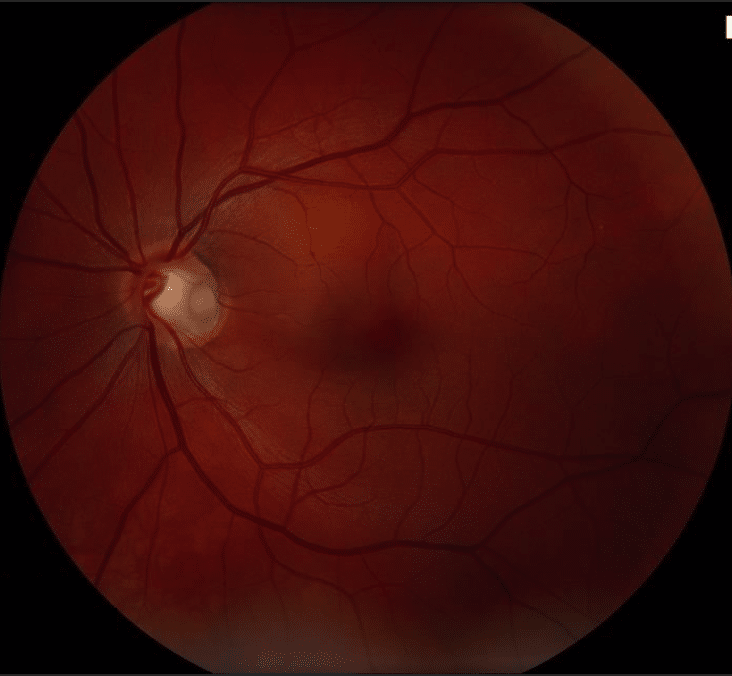
The fundus features of the right eye are normal.
In the left eye, there is a well-circumscribed retinal elevation in the superonasal macula, abutting the temporal optic disc margin. There is also anomalous appearance of the optic nerve.
Differential Diagnosis:
- Congenital optic nerve anomaly
- Optic nerve pit
- Central serous chorioretinopathy
- Vogt-Koyanagi-Harada Disease
- Idiopathic Choroidal Neovascularization
Macular OCT of both eyes shows a normal contour of the right macula and subretinal fluid in the superonasal left macula.
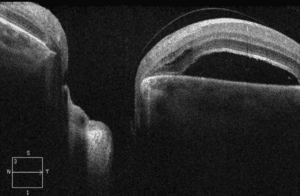
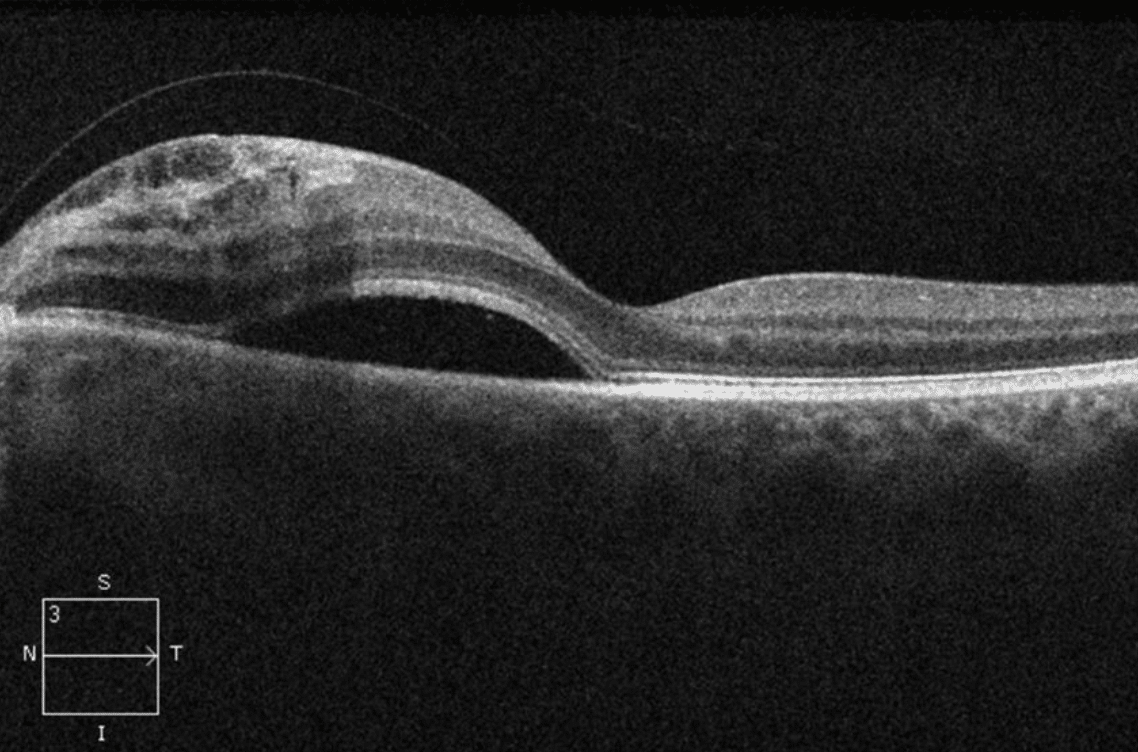
Fluorescein angiogram shows normal microvascular circulation of the right eye without abnormal fluorescence. The left eye shows subtle late hyperfluorescence of the optic disc, consistent with mild leakage, but is otherwise unremarkable.
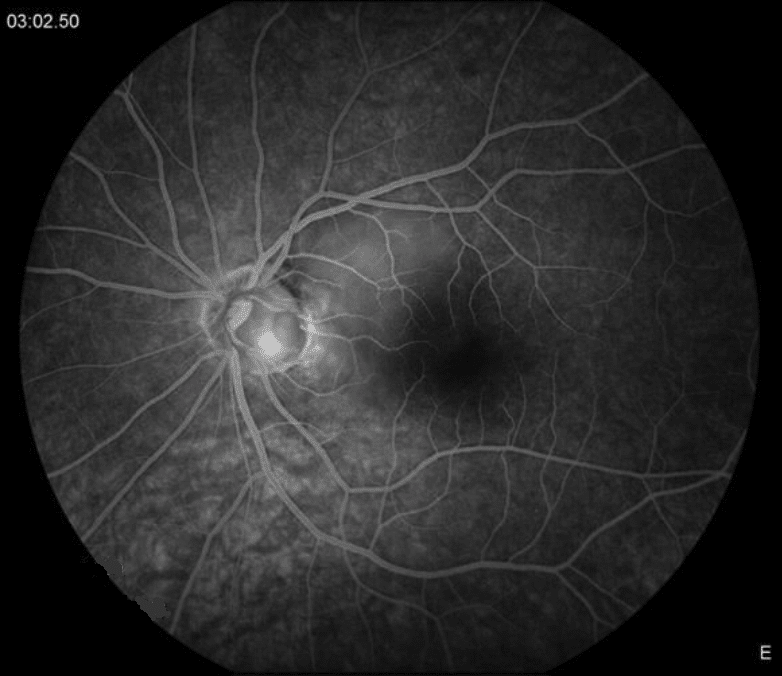
Diagnosis:
An optic nerve pit (ONP) is a gray-white oval depression, most commonly located in the inferotemporal aspect of an optic disc, and can be associated with either serous macular detachment or cystoid macular edema.1 Most often, optic nerve pits are asymptomatic, but they become visually symptomatic when fluid or edema are present. The origin of the subretinal fluid is still a subject of debate, but theories vary widely from claiming it is CSF exuding from the subarachnoid space to it being liquified vitreous coming in from the vitreous cavity.
ONPs can be congenital or acquired, almost always unilateral, and have no obvious inheritance pattern. This is in contrast to congenital optic nerve anomalies, can be bilateral and are often observed to be inherited in an autosomal dominant fashion.
Twenty-five percent of optic nerve pit maculopathies resolve spontaneously, however the natural course generally has a poor final visual outcome, which makes a more aggressive interventional approach preferred by most retina specialists.1 Laser photocoagulation at the temporal disc margin has been studied with varying results. The most promising results have been observed with surgery, a vitrectomy with or without ILM peeling, sometimes in combination with photocoagulation at the disc margin and/or gas injection.
References:
- Georgalas, Ilias, et al. “Optic disc pit: a review.” Graefe’s Archive for Clinical and Experimental Ophthalmology 249.8 (2011): 1113-1122.

